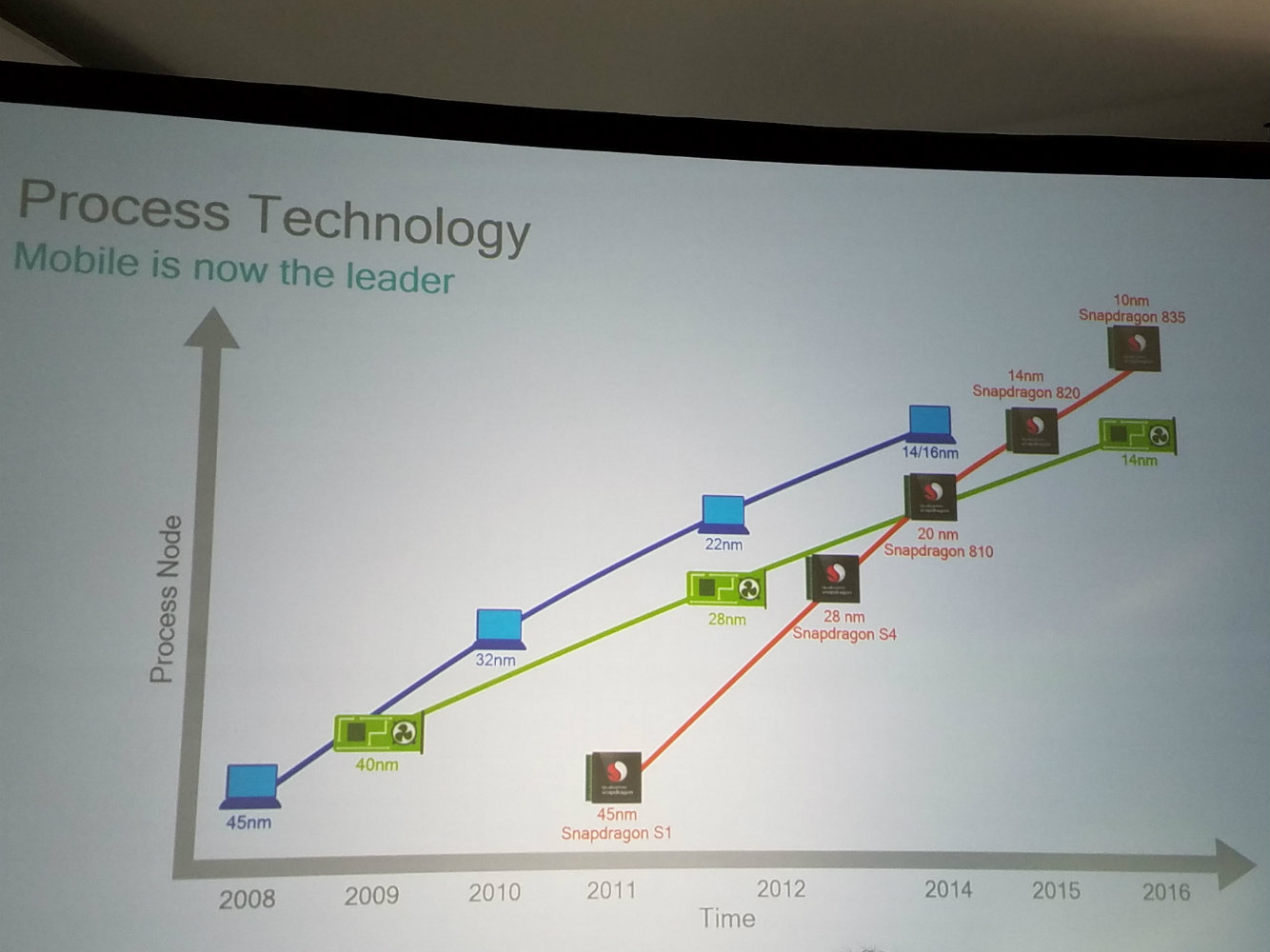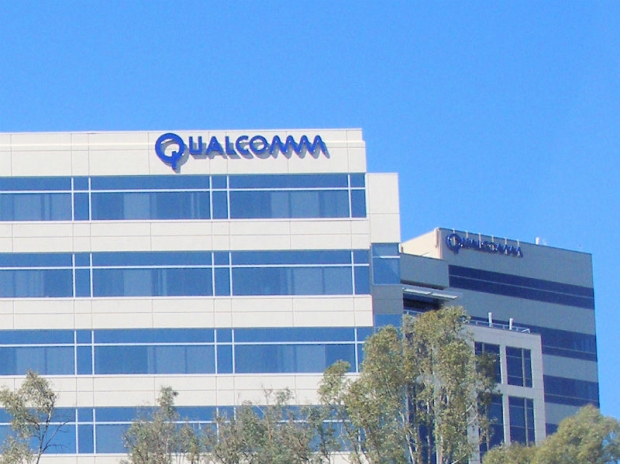Most of you know that the CPU and GPU industries were leading manufacturing transitions until recently. The fact is that it is extremely important for mobile industry to move to the smallest possible process to save power, add more features and get better performance per milliwatt and that's what got Qualcomm to this point. And being first is very good for end users and technology lovers too, as there are some huge benefits that come with 10nm.

Back in 2008, only eight years ago, the PC industry came up with 45nm processors and in 2010 the PC industry shrunk chips down to 32nm. This was following intel’s famous tick-tock process where Intel - and partially AMD - managed to move to a new manufacturing node every two years.
In 2009, both Nvidia and AMD managed to launch 40nm GPUs and upgraded to 28nm in late 2011, again within two years. Many GPU lovers might remember that the long awaited 20nm GPU generation never arrived. It was impossible to make efficient GPUs in 20nm due to manufacturing, design and yield problems.
AMD tried 20nm with APUs and this didn’t work either, as the products got canceled in the development phase. The GPU guys introduced 14nm on the AMD side and 16nm on the Nvidia front in mid 2015, and will probably stay at this manufacturing node for a while.
It is easy to say that the GPU industry doesn’t move as quickly as mobile, and PCs are doing their best to keep up with the mobile SoC migration to new manufacturing nodes, but at least in the last two years is having trouble keeping up. The GPU industry did a lot of optimization on 28nm as it was stuck with it for almost five years.
Back in 2014, Intel launched its first generation 14nm FinFET products and these showed important performance and energy savings especially on the notebook side. That is the famous Haswell. After Haswell, Intel launched a second-generation tock processor architecture codenamed Skylake. This was another successful microprocessor.
After this we were expecting to see 10nm architecture codenamed Cannon Lake, but instead of that a few months ago, Intel came up with the third generation of its 14nm codenamed Kaby Lake. This is the first time in a decade that Intel admitted a tick tock defeat as it failed to follow up with a new architecture two years after 14nm.
Recent intelligence is that Cannon Lake should arrive in the latter part of 2017, fingers crossed. We are also expecting the miracle Zen architecture that is supposed to launch early 2017 in desktops and to follow up in the server space in mid-2017.
Fudzilla exclusively wrote that AMD plans to skip 10nm due to manufacturing problems with the 10nm in high performance parts. AMD plans to follow up with 7nm architecture codenamed Starship.
High performance parts include notebooks, PCs and of course servers, and their TDP ranges from 4.5W to 17W in energy aware notebooks to 25 to 45W in more powerful notebooks all the way to 65, 95 and 130W for PCs and servers.
This is when the mobile SoC industry kicks in. Snapdragon 1 launched in 45nm in 2011. It took Qualcomm some two years to get to 28nm with Snapdragon S4. This was the time when mobile SoC industry managed to catch up with the GPU industry and move closer to the PC manufacturing industry.
In 2014. Qualcomm launched the 20nm Snapdragon 810, an SoC that didn’t do that well, but a year later it managed to replace the Snapdragon 820 manufactured in 14nm FinFET. This is the point where mobile SoC matched what is available on the PC side and exceeded what is possible in GPUs.
Now, in late 2016, Qualcomm has announced the world’s first 10nm that will realistically sell in the first half of 2017 and later. Now mobile SoC industry is leading against both GPU and PCs and this underlines the importance of the migration to manufacturing process to keep up with the demand for longer battery life, better performance for video, OS and Virtual Reality and essentially put more transistors and functional units on a smaller place. Higher integration is what the mobile industry is all about and companies like Qualcomm, Apple, Samsung, MediaTek, Huawei are doing quite a good job in their own unique way.
The fact that Qualcomm launched the first 10nm before Apple, who traditionally managed to move to a new manufacturing node a good half year before everyone else, speaks for itself. Year 2016 was good but 2017 is likely going to be even better.




